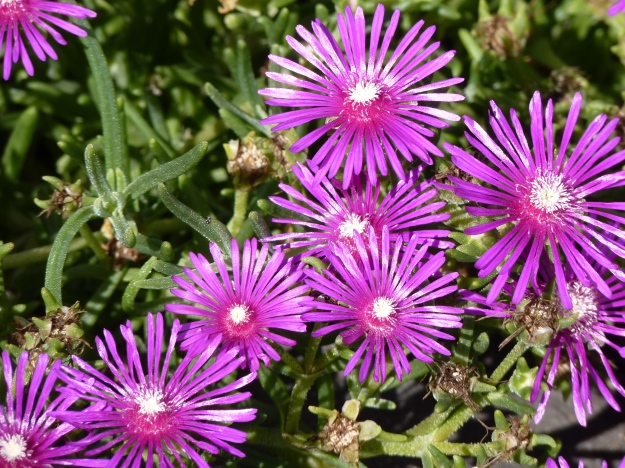DC locals. Playing at Black Cat tonight!
Get rid of those 3pm blues with a remix gem from RAC and Delorean that makes you say, “I just can’t get enough.”
The city of Helsinki tapped Madrid-based Lighting Design Collective (LDC) to convert a once-used oil silo into an interactive light installation called Silo 468 to commemorate Helsinki being the World Design Capital of 2012. To mark such occasion, the silo’s walls were perforated with 2,012 holes that display a mesmerizing light show in Helsinki’s Kruunuvuorenranta district.
Read more at Design Milk: http://design-milk.com/silo-468-interactive-light-art-for-urban-redevelopment/#ixzz2INfc95ZH
Great image posted by Incidental Comics.
I have always felt that music makes me more productive.
“Focus@Will staffers and UCLA researchers curate selections and and order them in such a way that the sound relaxes the limbic system in the listener’s brain. As a result, the company estimates, its selections can help people focus for the duration of 100-minutes sessions — quadruple the typical 20-minute period you might be able to focus without music.”
http://blogs.marketwatch.com/specialreport/2013/01/07/ces-the-surprising-sounds-of-productivity/
Sign up for beta and plug in your headphones. I am loving the Jazz station.
[Thanks, Jordan!]
“Now the first of December was covered with snow,
And so was the turnpike from Stockbridge to Boston.
Though the Berkshires seemed dreamlike on account of that frosting,
With ten miles behind me and ten thousand more to go.”
-James Taylor





Early on in Girl Scout Troop 1550 when we were chasing each other through the woods, hiding itching powder in sleeping bags, and exploring the wonderful world of Bunsen burners for the first time, we learned the motto “Leave only footprints and take only pictures.” It’s another way of saying “Enjoy and appreciate the environment, but don’t make things worse. Don’t disrupt nature – Be part of it.”
I love this saying, and I think there’s more to it – There’s also something in here that inspires me to make things better. If we deeply enjoy and appreciate the environment, we will want to care for it and improve it. I believe that we were put on this earth to do something that will make things better by the time we leave. If we take an authentic exploration within ourselves, we will find something we are passionate about, and we can imagine a service or a job that not only stimulates our deepest desires, but also helps other people and/or helps the environment. Helping ourselves and helping others are fully connected and ultimately the same.
We see it around us every day in news media and in pictures across the web: A zookeeper delivering and caring for baby tigers, a group of inner city children growing an organic garden, a young man helping an elderly woman cross a busy street in Tokyo, a doctor in Africa providing medicine and health care for AIDS victims, neighbors coming together and cleaning up after a natural disaster, a charitable organization accepting a large check from an anonymous donor. These mental images bring glowing warmth to my heart because they represent people who are part of the solution.
During yoga teacher training, Rolf Gates often advised us to “be where people are saying YES to the human potential.” In other words, we have a choice about how we spend our time and with whom we spend it. We can choose to be complacent or we can choose to live from a higher purpose. It’s an inspiring proposal, for sure; but when it comes down to application, how do we really “say yes” to the human potential?
For many of us, we have intentions to live on purpose and to help others, but our intentions are somewhat vague or murky, and the exercise of figuring out what it is that we want to do is daunting. Here are some reasons why we are hesitant to take this exploration:
Unfortunately (and fortunately), some or all of these things will happen during this exploration. We will be forced to navigate some of this process “alone.” Teachers can guide us and support us, but ultimately, this is an inside job. We will be forced to look at our lives with a microscope and really start to see things as they are. We will question our beliefs and choices. We will be happy about many, but also saddened and disappointed by others. We will be scared and we will feel lost at times. We will find that we can fulfill some of our intentions/dreams with minor changes to our life, but we will eventually realize that major shifts will be required for the way that we serve going forward. We will also realize that this process is not a “one and done” type of thing. It is something that we will continue to do over and over and over again. As time changes, so does our internal landscape.
For those of us passionate enough, awake enough, and courageous enough to venture into this territory, it is part of the process to confront these barricades, and to do so with compassion. We learn that the only way out is through.
It all starts with an inquiry…
On Monday afternoon I met with my boss, Jamie McIntyre, and he encouraged me to take part in an exercise by answering the following question, and to do so without borders:
What does a dramatically different 2013 look like?
After work I went home to my bedroom, lit a candle, closed my eyes, and sat quietly thinking about this for a long time. I noticed how I felt in my body. There was a sense of calm and also a subtle hint of anxiety. Fear arose in my chest as I thought about how it would be impossible to integrate my “life’s work” with my day job. And from fear came sadness… Sadness for all the ways I would need to change and what I would leave behind when I change. And then I started to write. I wrote for a while and when I finally stopped, I had 5 pages of notes. Here are some of them:
This cathartic process facilitated a shift inside. I got away from the chaos and minutia of daily tasks and I rediscovered what is most important to me on a cellular level. Among the standard wants and needs purged onto the paper, I was able to uncover some nuggets of beauty and brilliance.
The real gift from this exercise is that I was able to envision a way to bridge the gap between my daily tasks and my life’s purpose [more to come on that in future posts]. What I most feared (not being able to bridge the gap), ended up being the thing that inspired me the most during this process.
The next logical inquiry is this: What’s between me and being able to LIVE a dramatically different 2013?
That’s where it gets juicy. Chew on it.
In the meantime, try out this writing exercise. Open to possibility. Look for nuggets of beauty and brilliance. See what manifests and have the intention to live from that deep place of purpose.
[Thanks, Jamie!]
Here are some shots I took a few years ago when I first got an SLR.

Striking Purple in Emerald City, Seattle, WA (2010)

Baby Blue @ Lincoln Park Zoo, Chicago, IL (2010)

Sunflower Perfection, Poolesville, MD (2010)
Tina Fey says it best, so I am sharing her “Rules of Improvisation That Will Change Your Life and Reduce Belly Fat” from Bossypants:
The first rule of improvisation is AGREE. Always agree and SAY YES. When you’re improvising, this means you are required to agree with whatever your partner has created. So if we’re improvising and I say, “Freeze, I have a gun,” and you say, “That’s not a gun. It’s your finger. You’re pointing your finger at me,” our improvised scene has ground to a halt. But if i say, “Freeze, I have a gun!” and you say, “The gun I gave you for Christmas! You bastard!” then we have started a scene because we have AGREED that my finger is in fact a Christmas gun.
Now, obviously in real life you’re not always going to agree with everything everyone says. But the Rule of Agreement reminds you to “respect what your partner has created” and to at least start from an open-minded place. Start with a YES and see where that takes you.
As an improviser, I always find it jarring when i meet someone in real life whose first answer is no. “No, we can’t do that.” “No, that’s not in the budget.” “No, I will not hold your hand for a dollar.” What kind of way is that to live?
The second rule of improvisation is not only to say yes, but YES, AND. You are supposed to agree and then add something of your own. If I start a scene with “I can’t believe it’s so hot in here,” and you just say, “Yeah…” we’re kind of at a standstill. But if I say, “I can’t believe it’s hot in here,” and you say, “What did you expect? We’re in hell.” Or if I say “I can’t believe it’s hot in here,” and you say, “Yes, this can’t be good for the wax figures.” Or if I say “I can’t believe it’s hot in here,” and you say “I told you we shouldn’t have crawled into this dog’s mouth,” now we’re getting somewhere.
To me, YES, AND means don’t be afraid to contribute. It’s your responsibility to contribute. Always make sure you’re adding something to the discussion. Your initiations are worthwhile.
The next rule is MAKE STATEMENTS. This is a positive way of saying “Don’t ask questions all the time.” If we’re in a scene and I say, “Who are you? Where are we? What are we doing here? What’s in that box?” I’m putting pressure on you to come up with all the answers.
In other words: Whatever the problem, be part of the solution. Don’t just sit around raising questions and pointing out obstacles. We’ve all worked with that person. That person is a drag. It’s usually the same person around the office who says things like “There’s no calories in it if you eat it standing up!” and “I felt menaced when Terry raised her voice.”
MAKE STATEMENTS also applies to us women: Speak in statements instead of apologetic questions. No one wants to go to a doctor who says, “I’m going to be your surgeon? I’m here to talk to you about your procedure? I was first in my class at Johns Hopkins, so?” Make statements, with your actions and with your voice.
Instead of saying “Where are we?” make a statement like “Here we are in Spain, Dracula.” Okay, “Here we are in Spain, Dracula” may seem like a terrible start to a scene, but this leads up to the best rule:
THERE ARE NO MISTAKES, only opportunities. If I start a scene as what I think is very clearly a cop riding a bicycle, but you think I am a hamster in a hamster wheel, guess what? Now I’m a hamster in a hamster wheel. I’m not going to stop everything to explain that it was really supposed to be a bike. Who knows? Maybe I’ll end up being a police hamster who’s been put on “hamster wheel” duty because I’m “too much of a loose cannon” in the field. In improv there are no mistakes, only beautiful happy accidents. And many of the worlds greatest discoveries have been by accident. I mean, look at the Reese’s Peanut Butter Cup, or Botox.